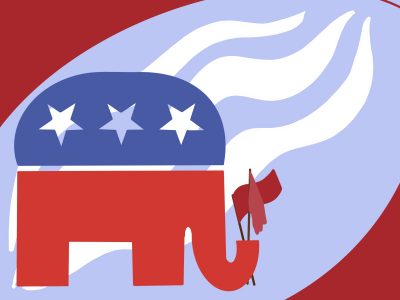I opened up the weekend edition of The Wall Street Journal on Saturday and read an editorial opposed to pork. Pork barrel spending, that is.
Pork barrel spending is a derogatory term for congressional earmarks, which are specific lines in a spending bill that direct money to a particular project or program.
One example of an earmark from the latest $1.5 trillion spending bill that the Wall Street Journal referenced was $3 million for a Houston museum about Mahatma Gandhi. What a total waste — or it would seem.
The editorial failed to mention a little bit of context — Texas is home to America’s second-largest Indian American population, and Houston is increasingly becoming a hub for this community. Indian Prime Minister Narendra Modi and President Donald Trump drew a crowd of 50,000 Indians in Houston in 2019.
A pinch of context goes a long way in discrediting anecdotal potshots like those taken at the Gandhi museum in Houston. For example, $3 million is 0.0002% of $1.5 trillion. Wasting any amount of money is bad, but for context, a penny is .0002% of $5,000.
To give even more context, earmark spending in the recent bill totaled $9.7 billion, which is 0.65% of $1.5 trillion.
However, corrupt spending, no matter how small, is still corrupt spending, and there should be safeguards to make sure earmarks are used responsibly.
Infamous examples of improper usage include Rep. Randy Cunningham, a Republican from California, who made a literal “bribe menu” for earmarks he would exchange for gifts.
However, appropriate precautions that ensure transparency can prevent earmark abuse. The 116th Congress — which served from 2019 to 2021 — had a bipartisan House Select Committee on the Modernization of Congress that offered recommendations to reinstate earmarks with transparency safeguards, such as disclosing connections between recipients of earmarks and the legislator who secured them.
Earmark ire is another faux outrage cooked up by those unable to see the broader picture. It reminds me a lot of how tort reform — which arose from the idea that frivolous lawsuits were a serious factor in driving up healthcare costs — was an issue President George W. Bush campaigned on in the 2004 presidential election.
Like some frivolous lawsuits being factors in rising healthcare costs, earmarks are a factor (in the direct cost) of increasing congressional spending. However, those hammering earmark spending miss that most congressional expenditures are on the military and entitlements. And those who hammer tort reform leave out doctor salaries, private hospitals, big pharma and insurance companies as the primary culprits behind high American healthcare costs.
If you really believe earmark spending is the direct cause of a bloated federal budget and tort reform is what will meaningfully drive down American healthcare costs, you might want to see your doctor for a cognitive assessment.

There are two reasons conservatives hate earmarks so much. Firstly, conservatives see the aforementioned legitimate corruption cases as a microcosm of a federal government that spends recklessly. The second reason is much more critical in that earmarks can help convince otherwise unwilling legislators to vote yes on a bill, provided the bill includes funding for a pet project in their districts.
On the flip side, opposing earmarks is excellent politics for conservatives, who would love for as few non-tax-cut laws to pass as possible so they can say they are fighting against Washingtonian greed and corruption while also eliminating the possibility that a more fiscally moderate member would vote for, say, a $1.5 trillion spending bill.
Even The Wall Street Journal tipped its hand by mentioning Tom Coburn’s comments that earmarks are a “gateway drug” for more government spending. All this talk of gateway drugs, earmarks and increased government spending has to be sending conservatives into a cold sweat.
However, I think common sense substantiates conservative fears about earmarks. More and bigger bills passing means more money being spent. Anything that increases the odds of more bills passing would increase the chances of more money being spent. That, not a bribe menu, is what the conservative outrage over earmarks is really about.
The 2011 congressional ban on earmarking led to the seedier practice of lettermarking — when a legislator contacts an executive agency and requests that agency to direct resources to a targeted source. The president and executive agencies have control over lettermarking. With America’s partisan political landscape, what could go wrong?
If Congress eliminates earmarks, a legislator need not put his name on a specific spending item. Instead, he can just call an executive agency to direct funds to the desired project or program. If that lawmaker is in the same political party as the President, the process becomes that much easier.
Lettermarking suffers from a lack of transparency that earmarks do not have. An earmark is written into the bill, and a transparency condition could guarantee that the people know who wrote the provision and to whom the money will go to.
Earmarks are a good example of something that works in Washington — an imperfect, blunt instrument that accomplishes an end. Whether or not you like earmarks may depend largely on whether or not you want the desired end — passing bills.
It would be nice to see Congress reclaim some of its powers — spending, in this case — rather than surrender yet more authority to the growing specter of the imperial presidency.























































































































